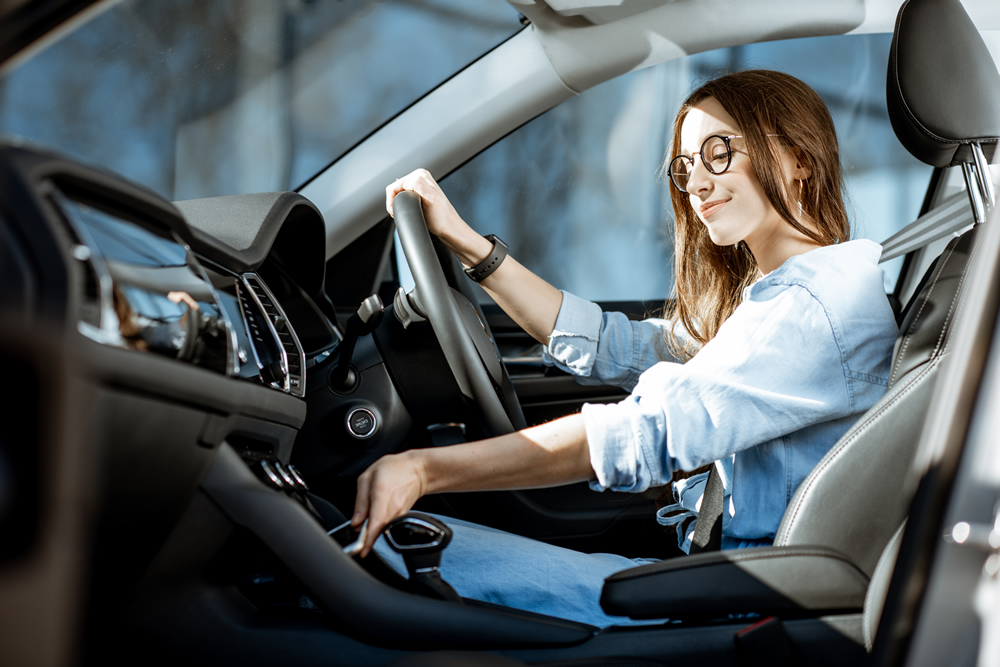
Ready to get behind the wheel? Need extra support to pass your driving test? Get in touch today.
One of the aspects of learning to drive that students find most challenging is dealing with other motorists on the road – understandably so.
Not only do you have to concentrate on what you’re doing and drive safely and competently yourself – you also have to watch out for other road users and pedestrians. In this way, learning to drive involves acquiring a unique set of skills and the ability to multi-task, keeping your awareness high at all times. Dealing with oncoming traffic can be daunting – but with proper tuition and plenty of practice you’ll soon feel less concerned when interacting with other road users.
In this simple guide I’ll cover the basics of dealing with oncoming traffic to help you increase your confidence and drive safely and competently during your driving lessons and beyond.
What is ‘oncoming traffic’?
The term ‘oncoming traffic’ refers to any vehicles that may be coming towards you as you’re driving along a road. Vehicles you might encounter include other cars, bikes, lorries, buses and motorcycles.
Meeting oncoming traffic – step by step
1/ Assess oncoming traffic continuously and identify action
When you’re driving and notice an obstruction up ahead, it’s important to prepare early. Check for any traffic approaching on the other side of the road, and assess whether you have priority over the oncoming vehicle.
When taking action, first see how much room there is for you and the other vehicle, estimate how fast they are moving and determine whether there is a safe gap for you to move into. Depending on their speed and any space available for you to use, you can then take action. If it’s safe to do so, go ahead. But if you have any doubts, or neither car has priority, it’s often best to wait in what is known as the ‘hold back’ position until you are sure of the safest approach.
If it’s necessary to stop, stay two car lengths back (where possible) from the obstruction. This allows you more space to manoeuvre and better visibility to further assess the situation.
2/ Check your mirrors and surroundings
Once you’ve assessed the situation on the road in front of you, you’ll need to check what’s behind and around you. Use all your mirrors and check your blind spots, looking over both shoulders.
These visual checks enable you to assess and understand the position of other road users to determine what the safest action to take will be. If a cyclist is trying to overtake you, another car is tailgating you or there are several hazards nearby, it’s best to be patient and wait. Take your time and only move when you are sure it is safe to do so. Depending on how long you’ve had to wait, you might need to conduct Step 1 and preliminary checks again as the situation may have changed.
3/ Signal and move off
Once you’re confident that it’s safe to do so, signal if necessary, check your surroundings again and move off carefully to rejoin the traffic.
Giving way to oncoming traffic
Sometimes it’s necessary to give way to oncoming traffic. On narrower roads or where there are parked cars in the way, you’ll need to stop and wait in a safe space before continuing your journey. The safest way to let other vehicles pass when they have right of way is to remain in the ‘hold back’ position, as covered above. This ensures that the other driver knows you are yielding to them, whilst keeping your field of vision wide and clear for when it’s time to move off again.
There are various situations that you may encounter whilst out on the roads, so you’ll need to be able to assess who has right of way and act accordingly. I’ll be sharing a separate blog all about right of way (also known as ‘priority’) soon.
Passing parked cars is one of the most common obstacles you’ll have to deal with when driving – especially in residential areas with more households owning several cars and parking space becoming tight. When passing parked cars you should follow the steps mentioned above – but also ensure that there is a gap wide enough for an average car door between you and the stationary vehicle. Reduce your speed if the gap is less than this, enabling you to react accordingly should a pedestrian step out from behind the parked vehicle or the door opens.
When travelling along a road with parked cars on both sides, keep an eye out for gaps you can pull into to allow you to navigate the space with other vehicles more easily.
On wider roads you might find that there is enough space for two vehicles to pass without giving way even with obstructions or parked cars around – but be sure to adjust your speed and leave a wide enough gap to allow the oncoming car to pass you safely.
Top tips to take away
There’s a lot to think about when you’re driving – especially when it comes to dealing with oncoming traffic. Some top tips to take away include:
- Be careful with right of way – some vehicles won’t give you priority and will proceed when they shouldn’t, so never assume you’re on the same page with the other driver.
- Always pass parked vehicles with plenty of space.
- Be sure to stay alert and aware at all times, checking mirrors and blind spots as well as what’s going on behind you. Things can quickly change, so take time to survey your surroundings properly rather than glancing over your shoulder.